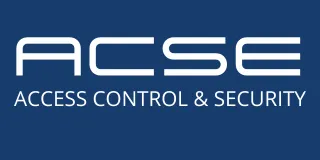
The Critical Role of Detailed Plans in Automated Gate System Projects
In the world of automated gate systems, success doesn’t just depend on high-quality equipment and expert installation—it begins with meticulous and detailed planning. Whether you're working on a residential driveway gate, a secure commercial complex, or a high-traffic industrial facility, well-drafted plans form the foundation for a project that meets safety standards, operates efficiently, and satisfies client expectations.
For gate automation installers, system integrators, fence contractors, and end-users, understanding the importance of detailed plans is critical. A solid plan can prevent costly errors, ensure compliance with safety standards like UL 325 and ASTM F2200, and streamline the overall project workflow. In this article, we explore the key elements of a successful plan and how careful planning impacts every stage of automated gate system projects.
1. Why Are Detailed Plans So Critical?
Detailed plans are more than just blueprints; they are the roadmap to project success. Without a comprehensive plan, even experienced professionals may encounter challenges that lead to delays, rework, or client dissatisfaction.
Key Benefits of Detailed Planning
Prevention of Errors:
Identifying potential issues during the planning phase reduces the risk of costly mistakes during installation.
A thorough site assessment helps anticipate problems like limited space, uneven terrain, or obstacles like trees or utility lines.
Safety and Compliance:
Detailed plans ensure compliance with safety regulations such as UL 325 and ASTM F2200, which mandate the proper use of safety devices, spacing, and clearances.
Safety hazards like pinch points, entrapment risks, or faulty positioning can be addressed early.
Efficient Resource Allocation:
From equipment and materials to workforce scheduling, clear plans help allocate resources effectively, minimizing delays and cost overruns.
Enhanced Communication:
A well-documented plan provides clarity to all stakeholders, including clients, subcontractors, and project teams, reducing miscommunication.
Cost Control:
Planning helps establish accurate budgets by identifying material and labor needs upfront, preventing unexpected expenses later in the project.
2. Key Elements of a Successful Gate System Plan
A detailed plan includes multiple components that work together to ensure a seamless project. Below are the essential elements that every installer, designer, or contractor should include:
2.1. Site Assessment and Layout
The first step in planning is conducting a comprehensive site survey to understand the physical and operational requirements of the project.
Space and Dimensions:
Measure the available space for the gate, operator, and safety devices.
Plan for clearance areas and pedestrian pathways as required by ASTM F2200.
Terrain and Obstacles:
Identify slopes, uneven ground, and obstructions (trees, buildings, or underground utilities) that could affect installation.
Use leveling tools and site diagrams to determine how to adjust for challenging conditions.
Traffic Flow Analysis:
Assess how vehicles and pedestrians will interact with the gate system.
Plan for separate entry and exit points for busy areas to prevent congestion.
Example: For an industrial sliding gate, consider installing a cantilever system if ground tracks are impractical due to uneven terrain or debris buildup.
2.2. Gate Design Specifications
Selecting the appropriate gate type and materials is essential to handle the operational demands and environmental conditions of the site.
Gate Type:
Sliding Gates: Ideal for high-traffic commercial and industrial areas.
Swing Gates: Suitable for residential and light commercial applications where space allows.
Cantilever Gates: Perfect for uneven ground and areas with heavy debris.
Material Selection:
Use galvanized steel, aluminum, or composite materials for durability.
For coastal or humid environments, prioritize rust-resistant finishes like powder coating.
Operator Selection:
Match the gate operator to the gate's weight, size, and expected cycle frequency.
Hydraulic operators are ideal for heavy gates or continuous use, while electromechanical operators suit lighter, low- to medium-use gates.
2.3. Safety and Compliance Integration
Safety considerations should be a cornerstone of the planning process. Compliance with industry standards not only ensures user protection but also minimizes liability.
UL 325 and ASTM F2200 Compliance:
Specify safety devices like photoelectric sensors, edge sensors, and loop detectors to prevent entrapment.
Ensure proper clearances to avoid pinch points and reach-through hazards.
Safety Zones and Pathways:
Plan safe pedestrian walkways and clearly separate vehicle access zones.
Emergency Access:
Include provisions for manual gate operation or emergency access during power outages.
2.4. Power and Wiring Layout
A proper electrical plan ensures smooth operation and long-term reliability of the gate system.
Power Requirements:
Confirm the availability of electrical supply near the gate installation site.
For remote locations, consider backup power options like solar panels or battery systems.
Wiring and Conduits:
Plan for weatherproof conduits to protect wiring from moisture, debris, and mechanical damage.
Map out cable routing to ensure clean, organized installation.
2.5. Project Timeline and Milestones
Establishing a clear timeline ensures that the project stays on track and stakeholders remain informed.
Phased Approach:
Break the project into milestones such as site preparation, gate fabrication, operator installation, safety device integration, and final testing.
Time Buffers:
Allow for contingencies like weather delays, material shortages, or unexpected site challenges.
Testing and Handover:
Allocate time for thorough system testing and client walkthroughs to ensure satisfaction.
3. The Impact of Poor Planning
While detailed plans set projects up for success, poor planning can have serious consequences:
Delays: Lack of accurate measurements or overlooked site conditions can stall installation and require costly rework.
Increased Costs: Unplanned expenses, such as unexpected equipment upgrades or additional labor, can strain budgets.
Safety Risks: Failure to address compliance and safety requirements can result in accidents, injuries, and legal liabilities.
Client Dissatisfaction: Inadequate communication or failure to meet expectations can harm relationships and damage reputations.
4. Best Practices for Creating Detailed Plans
To ensure your project runs smoothly, follow these best practices when developing your plan:
Involve Stakeholders Early:
Engage clients, subcontractors, and suppliers during the planning phase to align on expectations and requirements.
Use Accurate Measurement Tools:
Employ laser levels, measuring wheels, and site mapping software to capture precise site dimensions.
Document Everything:
Create detailed site diagrams, material lists, and step-by-step installation plans.
Prioritize Safety:
Always integrate safety features and verify compliance with UL 325 and ASTM F2200 before starting installation.
Test Before Completion:
Simulate full operation cycles and test all safety devices to confirm functionality.
Conclusion
In automated gate system projects, detailed plans are not optional—they are essential. From assessing the site to designing the gate, choosing materials, and ensuring compliance, each element of the plan directly impacts the project's success.
For gate automation installers, system integrators, and fence contractors, investing time in meticulous planning ensures smoother installations, safer systems, and happier clients. For end-users, a well-executed plan guarantees long-lasting performance, reduced maintenance costs, and peace of mind.
When you prioritize detailed planning, you are not just installing a gate—you are delivering a complete, reliable, and compliant solution that stands the test of time.

